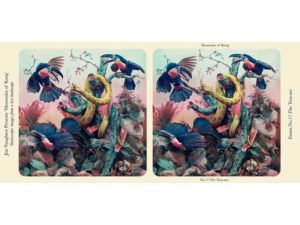 The shocking power of immersing oneself in another world was all the buzz once before—about 150 years ago.
The shocking power of immersing oneself in another world was all the buzz once before—about 150 years ago.
In June 1838, the British scientist Charles Wheatstone published a paper describing a curious illusion he’d discovered. If you drew two pictures of something—say, a cube, or a tree—from two slightly different perspectives, and then viewed each one through a different eye, your brain would assemble them into a three-dimensional view. This was, he noted, precisely how our vision works; each eye sees a slightly different perspective. Wheatstone created a table-size device to demonstrate the effect, with a viewer that sent a unique image to each eye: the world’s first stereoscope.
A decade later, the scientist David Brewster refined the design, crafting a hand-held device you could raise to your eyes. Insert a card with stereo images —a “view”—and presto! A scene came alive. Better yet, the photograph had recently been invented, which meant Brewster’s stereoscope could display not just crude hand drawings, but vivid images captured from real life.
“All these inventions just dovetailed perfectly by mid-century,” notes Douglas Heil, a professor and author of The Art of Stereography.
See the full story here: http://www.smithsonianmag.com/innovation/sterographs-original-virtual-reality-180964771/